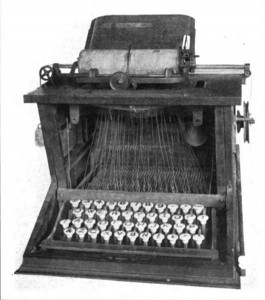Good morning, Whitewater.
The middle of our week will be mostly cloudy with a high of seventy-six. Sunrise is 6:14 AM and sunset is 7:38 PM. The moon is a waxing crescent with four percent of its visible disk illuminated.
On this day in 1883, Krakatoa, in the then-Dutch East Indies, explodes:
The combination of pyroclastic flows, volcanic ash, and tsunamis had disastrous results in the region. There were no survivors from the 3,000 people located on the island of Sebesi, about 13 km (8.1 mi) from Krakatoa. Pyroclastic flows killed around 1,000 people at Ketimbang on the coast of Sumatra some 48 km (30 mi) north from Krakatoa.[6] The official death toll recorded by the Dutch authorities was 36,417, although some sources put the estimate at 120,000 or more. Many settlements were destroyed, including Teluk BetungSirik and Serang in Java. The areas of Banten on Java and the Lampung on Sumatra were devastated. There are numerous documented reports of groups of human skeletons floating across the Indian Ocean on rafts of volcanic pumice and washing up on the east coast of Africa, up to a year after the eruption. Some land on Java was never repopulated; it reverted to jungle, and is now the Ujung Kulon National Park….
Global climate
In the year following the eruption, average Northern Hemisphere summer temperatures fell by as much as 1.2 °C (2.2 °F).[9] Weather patterns continued to be chaotic for years, and temperatures did not return to normal until 1888.[9] The record rainfall that hit Southern California during the “water year” from July 1883 to June 1884 – Los Angeles received 38.18 inches (969.8 mm) and San Diego 25.97 inches (659.6 mm)[10] – has been attributed to the Krakatoa eruption.[11] There was no El Niño during that period as is normal when heavy rain occurs in Southern California,[12] but many scientists doubt this proposed causal relationship.[13]
The eruption injected an unusually large amount of sulfur dioxide (SO2) gas high into the stratosphere, which was subsequently transported by high level winds all over the planet. This led to a global increase in sulfuric acid (H2SO4) concentration in high level cirrus clouds. The resulting increase in cloud reflectivity (or albedo) would reflect more incoming light from the sun than usual, and cool the entire planet until the suspended sulfur fell to the ground as acid precipitation.[14]
Global optical effects
The eruption darkened the sky worldwide for years afterwards, and produced spectacular sunsets throughout the world for many months. British artist William Ashcroft made thousands of colour sketches of the red sunsets half way around the world from Krakatoa in the years after the eruption. The ash caused “such vivid red sunsets that fire engines were called out in New York, Poughkeepsie, and New Haven to quench the apparent conflagration.”[15] This eruption also produced a Bishop’s Ring around the sun by day, and a volcanic purple light at twilight.
In 2004, an astronomer proposed the idea that the blood red sky shown in Edvard Munch‘s famous 1893 painting The Scream is also an accurate depiction of the sky over Norway after the eruption.[16]
Weather watchers of the time tracked and mapped the effects on the sky. They labeled the phenomenon the “equatorial smoke stream”.[17] This was the first identification of what is known today as the jet stream.[18]
For several years following the eruption it was reported that the moon appeared to be blue and sometimes green. Blue moons resulted because some of the ash clouds were filled with particles about 1 µm wide—the right size to strongly scatter red light, while allowing other colors to pass. White moonbeams shining through the clouds emerged blue, and sometimes green. People also saw lavender suns and, for the first time, noctilucent clouds.[15]
On this day in 1878, Christopher Sholes patents the typewriter:

On this date Christopher Latham Sholes patented the typewriter. The idea for this invention began at Kleinsteuber’s Machine Shop in Milwaukee in the late 1860s. A mechanical engineer by training, Sholes, along with associates Carlos Glidden and Samuel Soulé, spent hours tinkering with the idea. They mounted the key of an old telegraph instrument on a base and tapped down on it to hit carbon & paper against a glass plate. This idea was simple, but in 1868 the mere idea that type striking against paper might produce an image was a novelty.
Sholes proceeded to construct a machine to reproduce the entire alphabet. The prototype was sent to Washington as the required Patent Model. This original model still exists at the Smithsonian. Investor James Densmore provided the marketing impetus which eventually brought the machine to the Remington Arms Company. Although Remington mass-marketed his typewriter beginning in 1874, it was not an instant success. A few years later, improvements made by Remington engineers gave the machine its market appeal and sales skyrocketed. [Source: Wisconsin Lore and Legends, p.41]
Google-a-Day asks a question about art:
In 1861, Louis-Napoléon Bonaparte bought 11,835 artworks for the Louvre, including 641 paintings from what Italian art collector?
